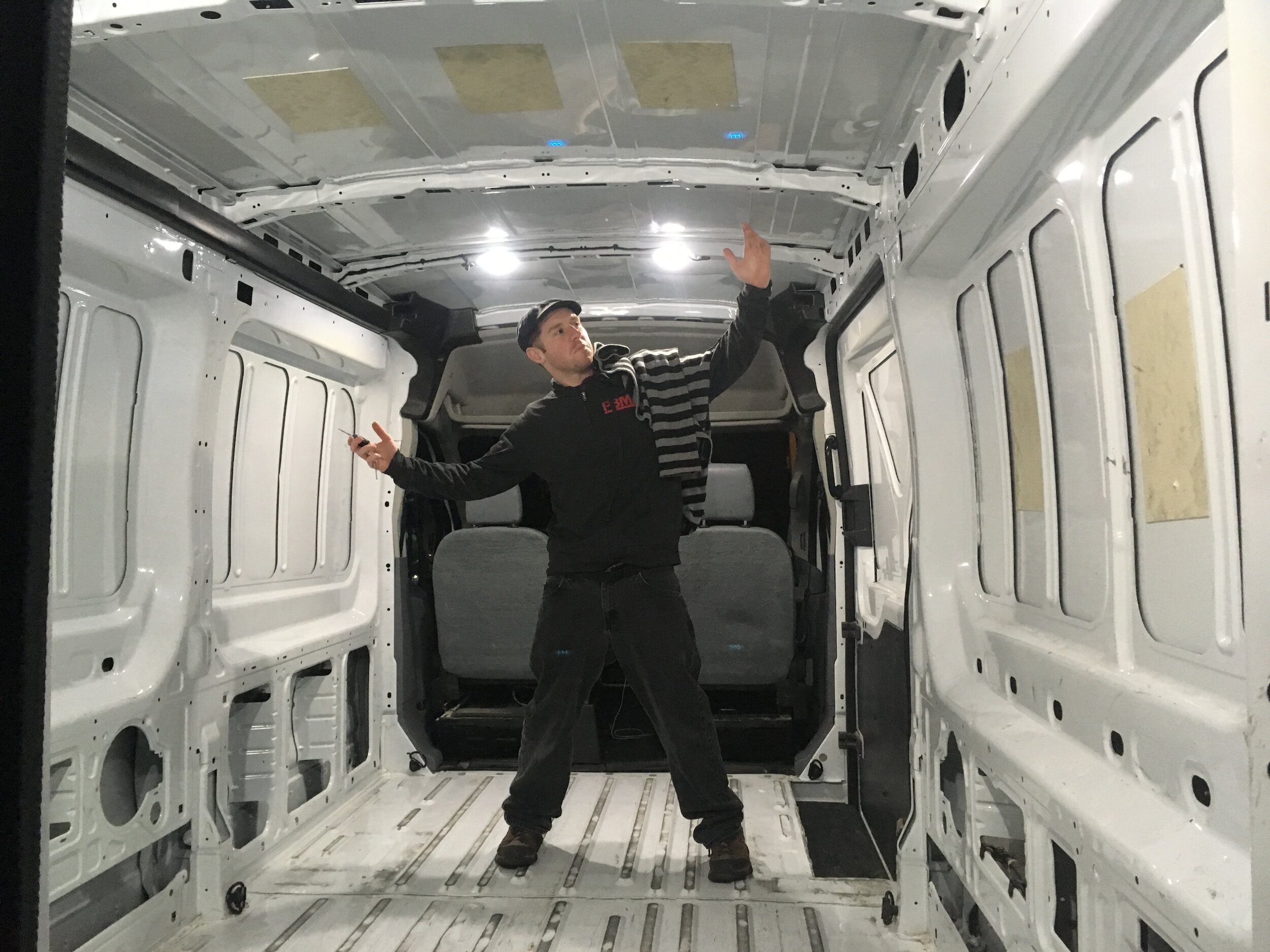on potential
Doug: By nature I kinda hold onto things.
Brooke: I’m more of a Marie Kondo, all-of-my-earthly-possessions-must-fit-into-a-sedan kinda gal.
Doug: The van is a big puzzle that you’re putting together, so you never know what could be useful until later stages.
Brooke: This build has definitely taught me to look for potential in stuff I might otherwise have given to Goodwill.
Doug: It’s also important not to have too much clutter, especially when you’re using a garage and driveway. If you don’t have a lot of space, be organized and do it in stages. Ask any mechanic: It’s really important to have a clean, organized space. Well… maybe not any mechanic.
You don’t need a giant workshop to do a van build; you just have to work in stages.
Doug: I try not to waste any wood.
Brooke: Does it make you feel guilty?
Doug: Yeah. That’s the cool thing about trash picking, because a lot less of it is trash because of us. As far as new pieces go, I haven’t wasted anything besides little bits of plywood. Any scrap we’ve gotten rid of, we were sure we weren’t going to use.
What’s cool about this philosophy is how respectful it is. How long does it take for a tree to grow to the point where it can be harvested? And how much time and effort went into making that desk on the curb? So much in our culture is treated like it’s disposable when it could still be useful. And what good is it going to do moldering in a landfill?
So before you go to throw something away, take a second and consider its potential. You might be able to do something cool with it later. A few examples...
This bass string, which Doug used to dry out the inside of a broken taillight.
This leftover red plastic from a taillight repair kit that he used to mute the aggressively bright LED temperature reading on our ARB fridge.
This wall made out of the slats from an old bed frame that had been in the attic for at least 12 years.
We made this shelf out of two rickety paint shelves we found on the sidewalk. The lips that look like a pair of eagles or semi trucks were the leftover bits of a desk we trash-picked and turned into a kitchenette.
This back light switch ended up being better than the original setup.
And finally, this round slice of wood that he mounted our toilet on was originally a mounting base he used for a Dremel stand to trim his bird’s talons.
This is Alice Cooper, a handsome and well-rounded green-cheeked conure.




















